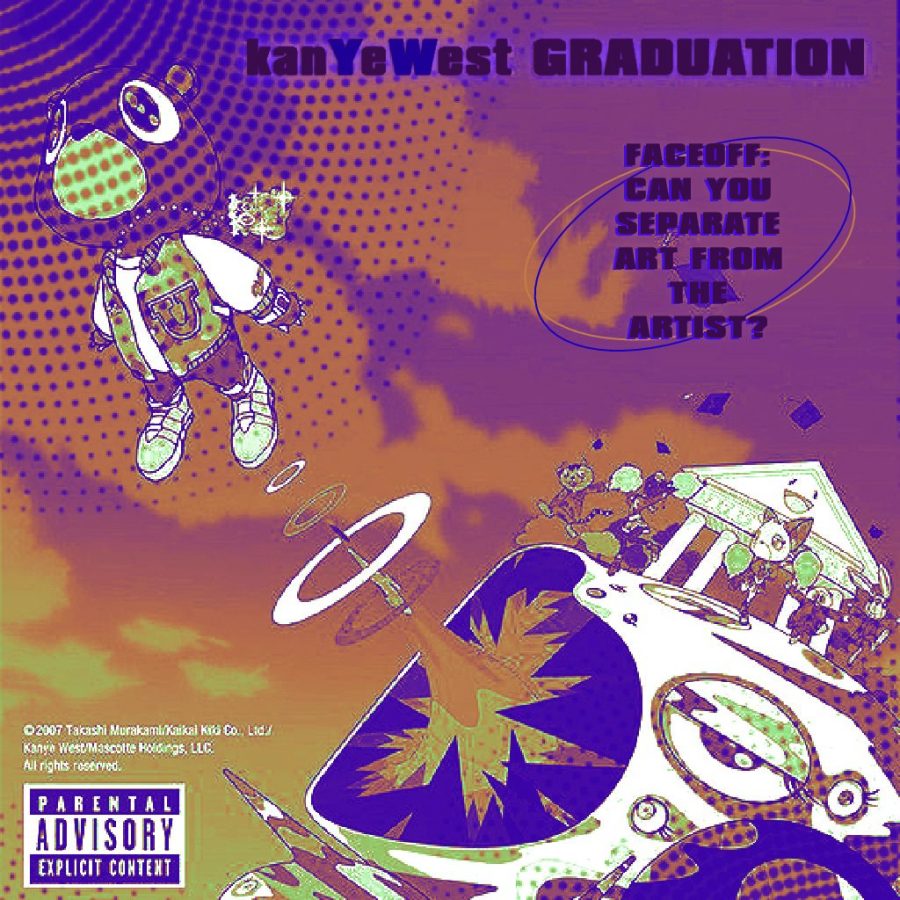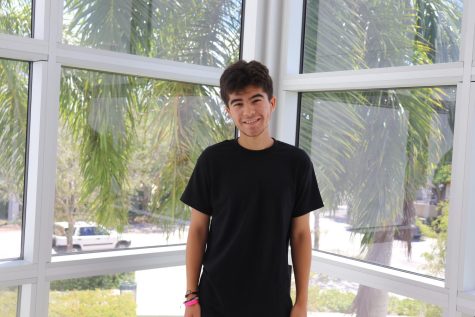FACEOFF: Can You Separate the Art from the Artist?
November 14, 2022
Yes: (S.P.)
“I have assumed as axiomatic that a creation, a work of art, is autonomous,” — T.S. Eliot, 1923
I love Rex Orange County’s music. Ever since he released, “Best Friend,” the single that set him on the track to stardom in 2017, his relatable lyrics, heart-wrenching instrumentals and versatile discography have inspired me since I was nine years old, carrying me through every phase of my adolescent development thus far. As a self-aware and opinionated feminist teenager, when I found out about his six counts of sexual assault in October, to say that I was in disbelief would be the ultimate understatement. Coming to terms with the fact that an artist who had been there for me through middle school, my first year of high school, my first break-up and a plethora of other “firsts,” could end up in jail left me shocked and heartbroken.
Combined with the recent controversy surrounding Kanye West’s anti-semitic commentary and a history of dispute regarding whether to separate an artist from their art — think R. Kelly, Michael Jackson, Woody Allen, Bill Cosby and more — I have begun to question where the line truly stands. Ultimately, choosing to separate an artist from their art comes down to personal preference, and there are ways to continue admiring someone’s work despite their actions.
From a historical standpoint, the idea of separating art from the artist was first introduced under the New Criticism of the early 20 century, a time when English literature was heavily analyzed and prioritized over classical literature. This academic idea became extremely popular as a tool for analyzing poetry, and despite it being among many different ways to consider art, it is the one that set the precedent for future in-depth analyses of literature and other works. Although the idea has evolved over time, its origins identify it as the best way to ensure a piece of art can stand on its own and be considered great — outside of the history or context surrounding its creator. This idea states that if a piece of art cannot stand alone, it is not truly great. If this concept is applied to current situations regarding Rex Orange County and West, the important part is ensuring that the consumer educates themselves on the situation, recognizes the faults of the artist and finds ways to admire the art without giving them money or a platform to continue spreading hate or committing crimes.
With that being said, the main concern of refraining from listening to an artist’s work after they are exposed for their crimes is that continuing to listen to their music on streaming platforms supports them financially. However, does this include circumstances where a person has made a one-time investment in a CD, vinyl record or iTunes purchase? In that case, continuing to watch or listen to a problematic person’s work without actively profiting from them should not be considered wrong.
Additionally, if one feels strongly enough about refraining from using streaming platforms to listen to a problematic artist’s music, one can listen to that music re-recorded on secondary platforms like YouTube, SoundCloud, Google Play Music or other platforms that do not benefit the artist. Furthermore, consider a famous musician as a business, with a brand. When one streams their music, they are not contributing to only the face of the brand. There are hundreds of others profiting off of streams: managers, producers, songwriters and more. If one of the owners of Target was exposed for making sexist comments, would you stop buying from Target completely?
So, for all of the Rex Orange County fans like myself, while Alex O’Connor’s unforgivable actions may mean selling or getting rid of his merchandise, it should not mean having to give up the feelings “Pluto Projector,” “THE SHADE” or “Television / So Far So Good” instill. However, we should be mindful of how to go about listening to ensure that we remain educated on the realities of the actions of these artists.
No: (M.A.)
“Every Art Expression is rooted fundamentally in the personality and temperament of the artist” – Hans Hofman
Michelangelo Merisi da Caravaggio was an Italian painter in the late 16th century. Icons of mythology within his paintings were altered to fit the view of the world he experienced. Beggars, prostitutes and servants acted as models for pious symbols and context. Would these paintings hold the same beauty and significance if they were not for context and explanation of the artist who created it?
Although not explicitly relating to the creator of the piece, conceptual art requires an explanation beyond what is in sight. The concept originally perceived by the artist is what takes the spotlight. This, of course, is not how all people look at art, but separating the art from the original meaning and artist wholly changes the perspective of the piece. The conceptual art movement — like most art movements over time — has been perpetuated by discontent with the established hierarchy and ways of thinking toward established institutions. If this discontent was not present among artists in New York and other hotspots in the beginning of the movement, the movement would virtually have never existed.
Change and innovation come with struggle and hardship, as has been observed through politics and art. If the struggle to achieve a goal was not present, whether it be to create a beautiful piece or leave an everlasting thought with an audience, then I believe that art would exist in a void without meaning.
Art is the reflection of artists’ virtues, opinions and experiences. To separate the art from the artist is to separate all context and purpose from art, other than its surface-level form which is not necessarily a bad thing. The question of “can we separate art from the artist” is wildly different from “should we separate the art from the artist.” A viewer or listener is almost always technically able to separate the artist from the product. However, in doing so, I believe we miss an important piece of the puzzle. Philosophynow.org cites art as “an expression of our thoughts, emotions, intuitions, and desires,” but it is even more personal than that: it is about sharing the way we experience the world, which for many is an extension of the personality.
Abstract Expressionism was a post-World War II art movement perpetuated by the effects of different countries’ war efforts and their effects on countries, soldiers and civilians. Abstract art acts as a gateway to the subconscious of artists. Abstract Expressionists, from Jackson Pollock to Mark Rothco to Robert Rauschenberg, allowed their fundamental ideologies to shine through their brush strokes, leaving the signature of the artist behind the meaning. Pollock, as well as other artists of the movement, embraced the political nature of Abstract Expressionism, which provided the meaning and background for much of the movement.
Art movements would not act in the same way as they do without the emotion, experience and context provided by specific artists. Art is an extension of the artist and continues to breathe life into the legacy of artists past their time on Earth.










